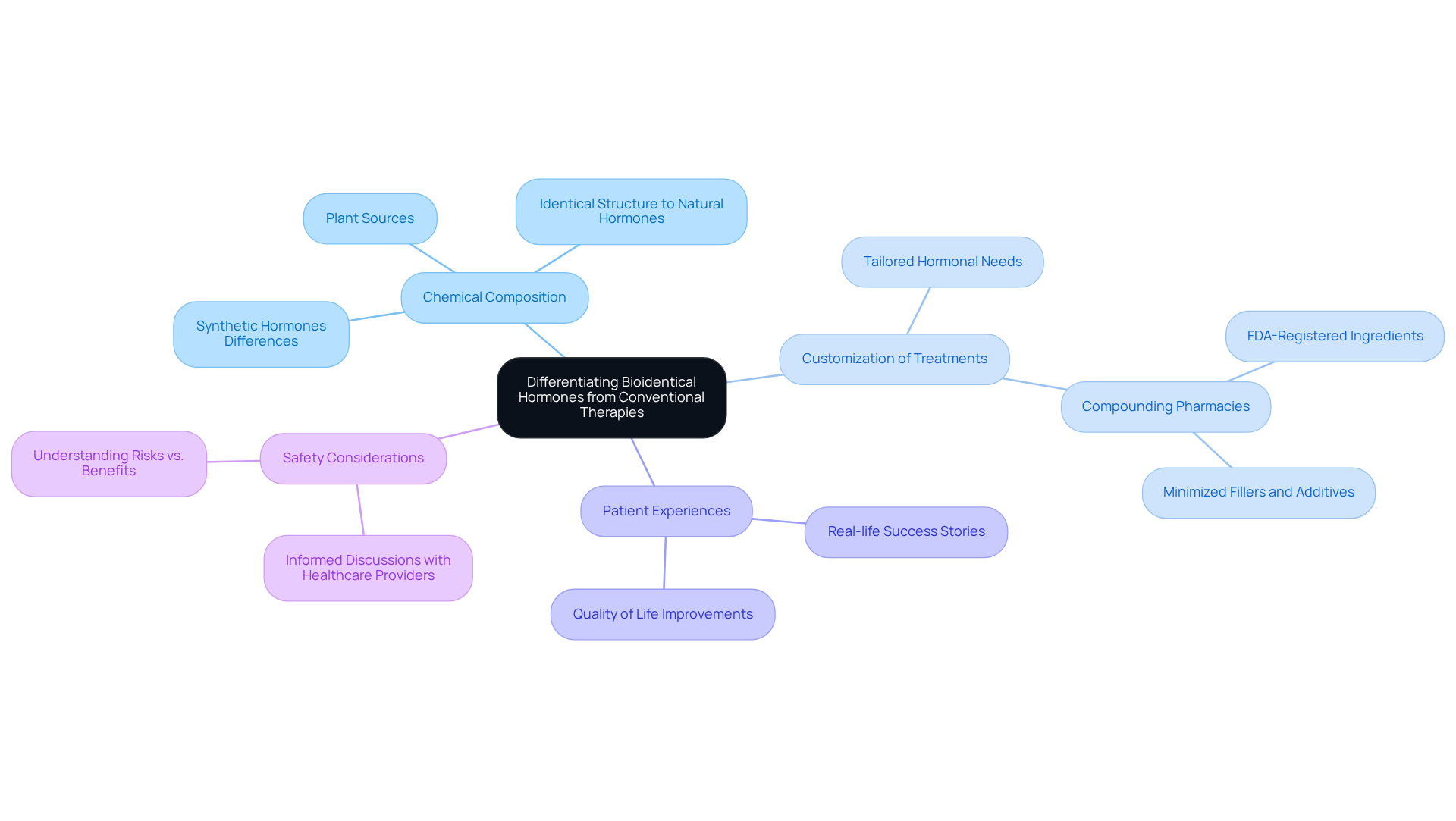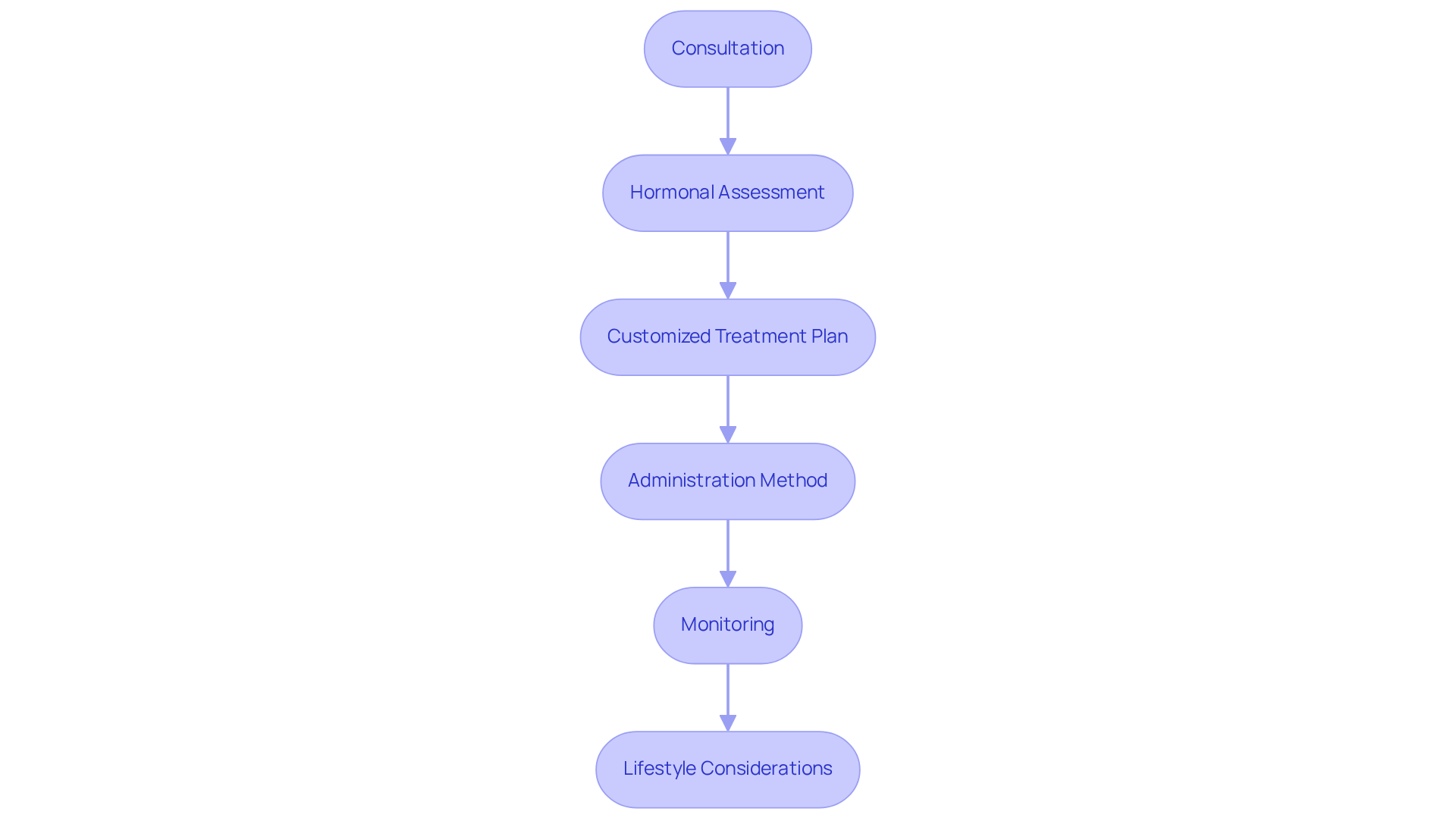


Understanding the delicate balance of hormones is crucial for maintaining optimal health, especially as we age. Many individuals face hormonal imbalances that can lead to various physical and emotional challenges. If you find yourself grappling with these issues, you’re not alone. Bioidentical hormone therapy has emerged as a compassionate solution for those seeking relief and balance in their lives.
But how do you navigate the complexities of this therapy? What should you consider before embarking on this journey? This guide aims to gently explore the nuances of bioidentical hormone therapy, highlighting its benefits and risks while providing essential steps to help you achieve hormonal harmony.
In addition to this, it’s important to recognize that seeking help is a sign of strength. You deserve to feel your best, and understanding your options can empower you to take control of your health. Let’s delve into this together, ensuring you feel supported every step of the way.
Maintaining bioidentical hormone therapy hormone balance is vital for our bodies to function at their best. It plays a key role in metabolism, mood regulation, and reproductive health. As we age, particularly women nearing menopause, hormone levels can fluctuate significantly. This can lead to feelings of fatigue, mood swings, weight gain, and a decrease in libido. Recognizing these changes is essential in determining when bioidentical hormone therapy hormone balance may be beneficial.
Hormones like estrogen, progesterone, and testosterone are crucial for maintaining energy levels, bone density, and heart health. Research indicates that imbalances in these hormones can increase the risk of osteoporosis, heart disease, and cognitive decline. Therefore, achieving and maintaining bioidentical hormone therapy hormone balance is crucial for overall well-being.
With projections suggesting that over a billion women will be in menopause worldwide by 2030, understanding the effects of these hormonal changes is more critical than ever. Have you noticed any changes in your body or mood? Engaging in proactive health management can make a significant difference. This includes:
Taking these steps can greatly enhance the quality of life for older adults. Remember, you’re not alone in this journey, and there are resources and support available to help you navigate these changes.

Bioidentical hormone therapy hormone balance utilizes substances that are chemically identical to those naturally produced by your body, derived from plant sources like soy and yams. This is different from traditional replacement treatments, which often use artificial substances that may not match your body’s natural biochemicals. Understanding this distinction is crucial, as the bioidentical hormone therapy hormone balance can offer a more personalized treatment approach, potentially leading to fewer side effects and greater effectiveness.
Have you ever felt overwhelmed by standard treatments? Traditional options usually come in fixed amounts, but bioidentical hormone therapy hormone balance allows for customized substances that can be tailored to meet your unique hormonal needs. This is especially beneficial for older individuals who may have specific health considerations. At Amavita, we offer personalized testosterone replacement programs designed to enhance your body’s levels while also considering heart health through our unique Virden Method™ approach. Our programs start at just $249 a month, providing flexible options to fit various budgets.
Recent studies indicate that many women under 60 experiencing challenging menopausal symptoms believe that bioidentical hormone therapy hormone balance may offer benefits that outweigh the risks associated with traditional alternatives. Real-life success stories highlight how patients have experienced significant improvements in their quality of life after achieving bioidentical hormone therapy hormone balance through natural replacements. This reinforces the importance of understanding these differences.
It’s also vital to choose compounding pharmacies that source their ingredients from FDA-registered facilities to ensure safety and quality. This knowledge empowers you to have informed discussions with your healthcare provider about the best treatment options available. Remember, you’re not alone in this journey; we’re here to support you every step of the way.

Starting your journey with bioidentical hormone therapy hormone balance can feel overwhelming, but you’re not alone. Here are some essential steps to guide you:
Consultation: Begin by scheduling a meeting with a qualified healthcare provider who specializes in endocrine therapy. This is your chance to share your symptoms, medical history, and wellness goals. Together, you’ll assess whether the bioidentical hormone therapy hormone balance is the right fit for you.
Hormonal Assessment: Next, you’ll undergo a comprehensive hormonal assessment. This typically involves blood, saliva, or urine tests to evaluate key substances like estrogen, progesterone, and testosterone. Understanding your current hormonal levels is crucial for your well-being.
Customized Treatment Plan: With your test results in hand, your provider will create a personalized treatment plan. This plan may include specific substances for bioidentical hormone therapy hormone balance, tailored to address your unique hormonal imbalances and ensuring you receive the care you need.
Administration Method: There are various ways to administer hormones, such as creams, gels, injections, or pellets. It’s important to choose the method that fits seamlessly into your lifestyle, making it easier for you to stick with the treatment.
Monitoring: Regular follow-up appointments are vital for tracking your hormone levels and assessing your progress. These check-ins help ensure your treatment remains effective and safe, allowing for timely adjustments to your dosages if needed.
Lifestyle Considerations: To enhance the benefits of your treatment, consider adopting healthy lifestyle changes. A balanced diet and regular exercise can significantly boost your overall well-being and complement the advantages of BHRT.
By following these steps, you’re taking a meaningful step toward achieving bioidentical hormone therapy hormone balance. Remember, this journey is about improving your quality of life, and support is always available to help you along the way.

Before you consider bioidentical hormone therapy, it’s important to gently weigh both the potential benefits and risks involved:
Benefits:
Risks:
By thoughtfully considering these factors, including the fact that around 1 to 2.5 million women in the U.S. over age 40 are using bioidentical hormone therapy hormone balance, you can make choices that align with your health goals and lifestyle. Remember, you’re not alone in this journey, and support is available to help you navigate your hormone management with care.

Achieving hormone balance through bioidentical hormone therapy is essential for optimal health, especially as we face the challenges that come with aging. This therapy provides a personalized approach that closely mirrors our body’s natural hormones, leading to improved well-being and a higher quality of life. Understanding the differences between bioidentical and conventional hormone therapies is crucial. It empowers you to make informed choices about your health.
The article highlights several key points:
It also emphasizes the importance of consulting healthcare professionals and evaluating both the risks and benefits associated with treatment. By following a structured approach, you can navigate your hormone health with confidence and support.
Ultimately, the journey toward achieving hormone balance is important, and it’s one that shouldn’t be taken lightly. You are encouraged to actively engage with your healthcare providers, explore treatment options, and consider lifestyle changes that can enhance your hormone health. Taking these steps not only fosters personal empowerment but also contributes to a broader understanding of the importance of hormone balance in maintaining vitality and well-being. Remember, you’re not alone in this journey; support is available, and together, we can work towards a healthier future.
Why is hormone balance important for our bodies?
Hormone balance is vital for optimal body function, affecting metabolism, mood regulation, and reproductive health.
What changes in hormone levels occur as we age, particularly for women?
As women approach menopause, hormone levels can fluctuate significantly, leading to fatigue, mood swings, weight gain, and decreased libido.
Which hormones are crucial for maintaining energy levels and overall health?
Estrogen, progesterone, and testosterone are crucial for maintaining energy levels, bone density, and heart health.
What health risks are associated with hormone imbalances?
Imbalances in hormones can increase the risk of osteoporosis, heart disease, and cognitive decline.
What should individuals do if they notice changes in their body or mood?
Individuals should engage in proactive health management by having open conversations with healthcare providers about their symptoms and exploring potential treatments.
Why is it important to understand hormonal changes, especially in the context of menopause?
With projections that over a billion women will be in menopause worldwide by 2030, understanding these hormonal changes is critical for managing health and well-being.
What resources are available for those experiencing hormonal changes?
There are resources and support available to help individuals navigate hormonal changes, including healthcare providers and treatment options.